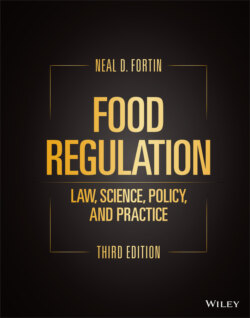Читать книгу Food Regulation - Neal D. Fortin - Страница 252
5.4 PREAPPROVED HEALTH CLAIMS (NLEA)
ОглавлениеThe preapproved or authorized health claims are those health claims expressly authorized by an FDA regulation under the authority provided by NLEA and the Dietary Supplement Health and Education Act of 1994 (DSHEA). These are sometimes referred to as NLEA health claims in addition to authorized health claims. Under the authorized health claims provisions of the FD&C Act, no food may make such a claim unless:
1 expressly authorized by a specific regulation and
2 the claim complies with the terms of the regulation.
These preapproved health claims characterize a relationship between a food, a food component, dietary ingredient, or dietary supplement and risk of a disease (for example, “diets high in calcium may reduce the risk of osteoporosis”). FDA authorizes these types of health claims based on an extensive review of the scientific literature, generally as a result of the submission of a health claim petition, using the significant scientific agreement standard to determine that the nutrient/disease relationship is well established.
Claims can be made in several ways: through third‐party references (such as the National Cancer Institute), statements, symbols (such as a heart), and vignettes or descriptions. Whatever the type, the claim must meet the requirements for authorized health claims. For example, the claim cannot state the degree of risk reduction and can only use “may” or “might” in discussing the nutrient or food–disease relationship. And the claim must state that other factors play a role in that disease. The claims also must be phrased so that consumers can understand the relationship between the nutrient and the disease, and the nutrient’s importance in relation to a daily diet. An example of an appropriate claim is: “While many factors affect heart disease, diets low in saturated fat and cholesterol may reduce the risk of this disease.”
The following are some of the FDA‐authorized health claims and some (but not all) of the specific requirements on their use.15
